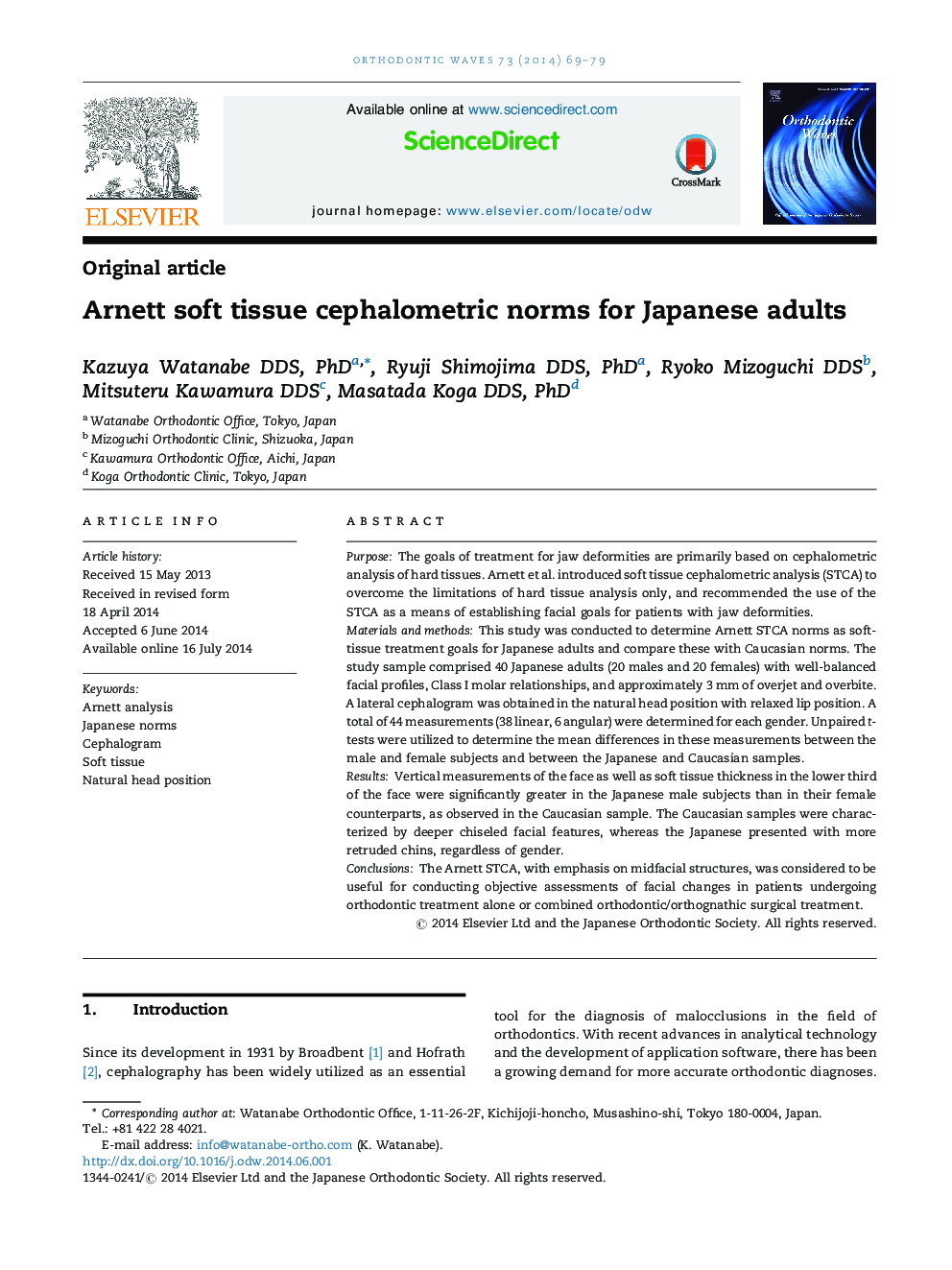| Article ID | Journal | Published Year | Pages | File Type |
|---|---|---|---|---|
| 3170340 | Orthodontic Waves | 2014 | 11 Pages |
PurposeThe goals of treatment for jaw deformities are primarily based on cephalometric analysis of hard tissues. Arnett et al. introduced soft tissue cephalometric analysis (STCA) to overcome the limitations of hard tissue analysis only, and recommended the use of the STCA as a means of establishing facial goals for patients with jaw deformities.Materials and methodsThis study was conducted to determine Arnett STCA norms as soft-tissue treatment goals for Japanese adults and compare these with Caucasian norms. The study sample comprised 40 Japanese adults (20 males and 20 females) with well-balanced facial profiles, Class I molar relationships, and approximately 3 mm of overjet and overbite.A lateral cephalogram was obtained in the natural head position with relaxed lip position. A total of 44 measurements (38 linear, 6 angular) were determined for each gender. Unpaired t-tests were utilized to determine the mean differences in these measurements between the male and female subjects and between the Japanese and Caucasian samples.ResultsVertical measurements of the face as well as soft tissue thickness in the lower third of the face were significantly greater in the Japanese male subjects than in their female counterparts, as observed in the Caucasian sample. The Caucasian samples were characterized by deeper chiseled facial features, whereas the Japanese presented with more retruded chins, regardless of gender.ConclusionsThe Arnett STCA, with emphasis on midfacial structures, was considered to be useful for conducting objective assessments of facial changes in patients undergoing orthodontic treatment alone or combined orthodontic/orthognathic surgical treatment.
